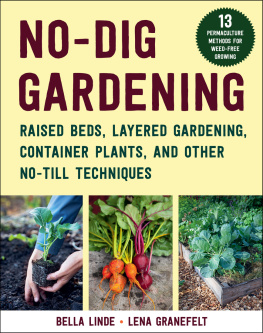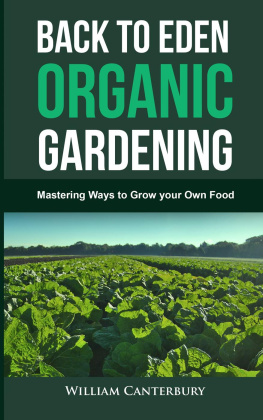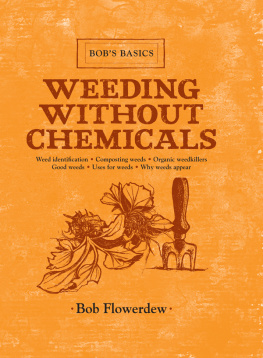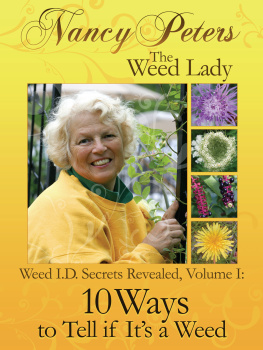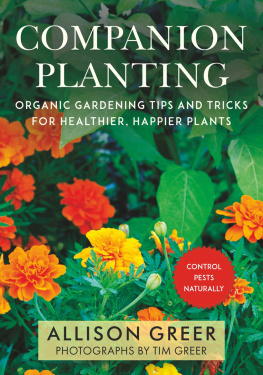Tasha Greer - Weed-Free Gardening
Here you can read online Tasha Greer - Weed-Free Gardening full text of the book (entire story) in english for free. Download pdf and epub, get meaning, cover and reviews about this ebook. year: 2022, publisher: Cool Springs Press, genre: Romance novel. Description of the work, (preface) as well as reviews are available. Best literature library LitArk.com created for fans of good reading and offers a wide selection of genres:
Romance novel
Science fiction
Adventure
Detective
Science
History
Home and family
Prose
Art
Politics
Computer
Non-fiction
Religion
Business
Children
Humor
Choose a favorite category and find really read worthwhile books. Enjoy immersion in the world of imagination, feel the emotions of the characters or learn something new for yourself, make an fascinating discovery.

- Book:Weed-Free Gardening
- Author:
- Publisher:Cool Springs Press
- Genre:
- Year:2022
- Rating:5 / 5
- Favourites:Add to favourites
- Your mark:
- 100
- 1
- 2
- 3
- 4
- 5
Weed-Free Gardening: summary, description and annotation
We offer to read an annotation, description, summary or preface (depends on what the author of the book "Weed-Free Gardening" wrote himself). If you haven't found the necessary information about the book — write in the comments, we will try to find it.
Weed-Free Gardening — read online for free the complete book (whole text) full work
Below is the text of the book, divided by pages. System saving the place of the last page read, allows you to conveniently read the book "Weed-Free Gardening" online for free, without having to search again every time where you left off. Put a bookmark, and you can go to the page where you finished reading at any time.
Font size:
Interval:
Bookmark:
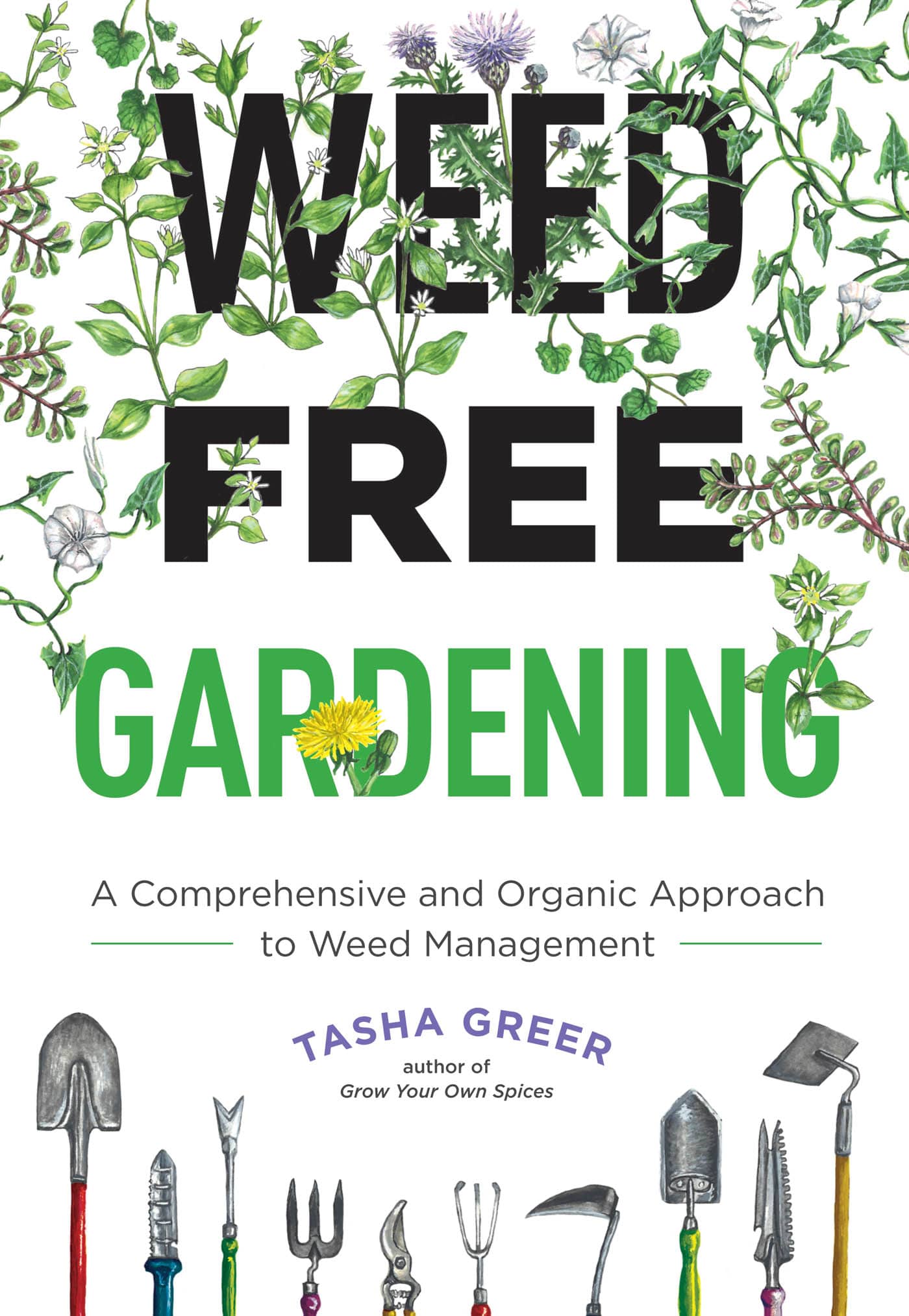
A Comprehensive and Organic Approach to Weed Management
TASHA GREER
author of
Grow Your Own Spices



This is an example of interplanting for weed prevention. Sorghum, amaranth, and sunflowers provide vertical structure. Jobs tears (Coix lacryma-jobi) and Maypop passion flowers vine up. Pumpkin leaves give weed cover. Cherry tomatoes, jalapeos, and basil ensure I come to harvest and do minor weed control on the patch.
There is no single, magic answer to make weeds go away safely. It takes a selection of targeted strategies and regular garden maintenance to stay ahead of potential plant invaders. Yet, there are many ways to make weeding easier and more enjoyable while also improving your soil, growing healthier plants, and enhancing the beauty of your landscape and garden.

Are mugwort (Artemisia vulgaris) and henbit (Lamium amplexicaule) weeds or easy-to-grow edible and medicinal plants that help crowd out other weeds? Before you decide, do a little research to see if this information changes how you perceive these plants.
In this book, Ill share an arsenal of broad-spectrum weed control tools, tricks, and practices that dont require chemical warfare. Well also get into fun ways to integrate popular weed-free methods, such as square foot, straw bale, no dig, grow bag, and raised bed gardening throughout your landscape. Well even touch on weeds in the context of comprehensive gardening systems, such as permaculture and ecological restoration.
The information in these pages will also free you from the modern cultural aversion to plants that grow on their own. While it is true that there are some true weeds that must be controlled, most self-sowing or easily spreading plants dont deserve to be treated like weeds at all. These helpful volunteers can improve our gardening practices, make our landscapes healthier, and may have edible or medicinal value.
Finally, I understand the lure of those sublime weed-free gardens seen on social media, in magazines, and in books. Even when we know that it took a team of gardeners, a professional photographer, and artful manipulation to capture that moment of perfection, we still cling to those unattainable standards of beauty at home. So, as part of a comprehensive weed management approach, I will help reset your aesthetic expectations for what truly beautiful gardens look like. Toward that end, Ill expose the weed secrets of some renowned gardeners.
Well study up on five key types of weed-like plants that may need controlling and learn about our human history of weeding. Then, the rest of the book is broken down into four parts: prevention, maintenance, reconciliation, and creating peace in the garden. As we work our way through the book, youll see these sections interrelate to form a whole picture of restorative gardening.
In all things gardening, an ounce of prevention is better than a pound of cure, as the saying goes. So, is where we get into the garden together. There youll find inspiration and easy ways to help you end your war on weeds and enjoy peace in your garden.

In many gardens, violets are a nature-provided soil protector. A few leaves of false strawberry and curly dock are also in this mix, ready to take over when the violets time out in warmer weather.
LETS GET INTO THE WEEDS!
A weed is a plant out of place. This is an awesome way to describe many volunteer plants that show up uninvited in our landscapes. For this book, though, Ill specifically address five types of weed-like plants.
In nature, there are no weeds, only plants that solve problems or fill niches in an ecosystem. For example, imagine the natural cycle that unfolds after a forest fire.
Without the tree canopy and leaf litter to shade the soil, previously dormant seeds, exposed to light, suddenly germinate. These plants grow, flower, produce more seeds, and quickly die. Within a year or two, several generations of volunteer plants have grown and died back, making natural mulch over the burned area. Underground, decaying roots protect topsoil and feed rebounding populations of soil life.
As the soil stabilizes in response to being protected, plants from adjacent forest areas send runners into the burn zone to start new plants. Nearby trees and shrubs drop seeds that roll into the area, germinate, and take root in the moist mulch. These plants grow and shade the soil, preventing those fast-growing, self-sowing plant seeds from germinating. Soon, the slower growing forest plants dominate again.
In our gardens, we often disturb our land much like a fire would. By eliminating native vegetationraking out leaf litter, digging into the subsoil to remove unwanted plants, and allowing topsoil to erode by wind and rainour actions trigger weeds to spring into action to protect soil.
But these plants arent weeds. Theyre heroes! For example, prolific cool weather weeds like chickweed (Stellaria media), deadnettle (Lamium purpureum), violet (Viola sororia), ground ivy (Glechoma hederacea syn. Nepeta glechoma Benth., Nepeta hederacea) protect bare soil when gardeners and other plants take their winter break. You can also easily control these weeds by cutting back their leaf matter for the compost pile, then covering them with a few layers of paper and mulch.

Deadnettle (Lamium purpureum) is easy to remove if you lift the leaves and pull by the crown. Its also a wonderful cool season ground cover that limits the spread of other weeds, such as the Carolina geranium lurking here.
There are more insidious characters that have evolved specifically in response to our agricultural methods. These plants come in all formsperennials, annuals, taproot, fibrous-root, ground cover, shrubbery, and trees. They reproduce rapidly, thrive in disturbed soil, and grow better than cultivated plants in poor conditions (e.g., droughts, floods, and soil nutrient imbalances).
Font size:
Interval:
Bookmark:
Similar books «Weed-Free Gardening»
Look at similar books to Weed-Free Gardening. We have selected literature similar in name and meaning in the hope of providing readers with more options to find new, interesting, not yet read works.
Discussion, reviews of the book Weed-Free Gardening and just readers' own opinions. Leave your comments, write what you think about the work, its meaning or the main characters. Specify what exactly you liked and what you didn't like, and why you think so.


